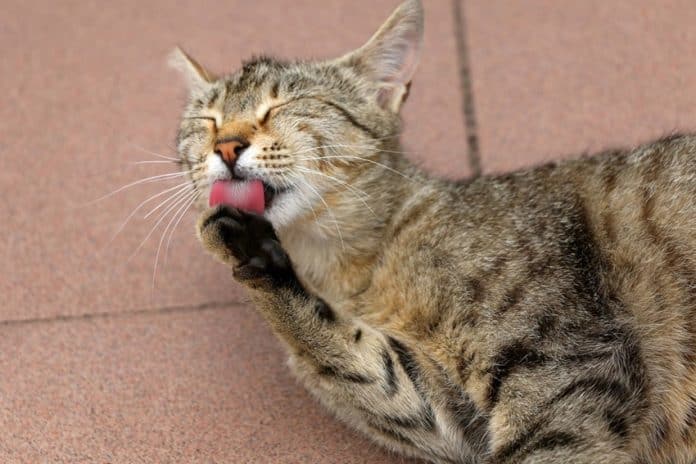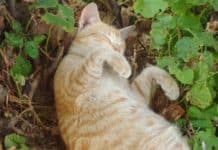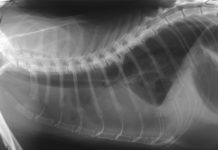Most cats are considered to be scrupulous groomers, yet what happens when their behavior goes excessively? For a range of reasons, some cat scratching, chewing, and licking behaviors start to become compulsive. Further, compulsive grooming in felines or cats may annoy you and even damage the cat’s coat and skin. If it so happen that your cat is licking, chewing, or scratching itself excessively, it’s likely you catch it in the act regularly. However, if you don’t, the first clue might be the disappearance of its fur, frequently in strips on its stomach or back. Cats that has self-mutilating behaviors might also cause irritated, red areas known as hot spots to develop, yet they’re less possible than in dogs.
The Condition
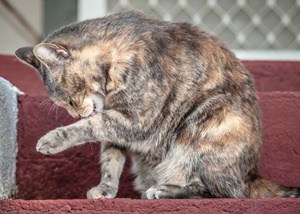
Even though compulsive scratching, chewing, or licking behaviors in cats may develop in any animal, they’re more typically observed in various oriental cat breeds. Just like the Siamese cats. Furthermore, the female cats are more susceptible than the males to chew, pull their fur, or lick. Due to the fact that there are many medical conditions, which might result in licking and scratching behaviors, make sure to consult with your vet to assist in determining the cause, as well as the best course of action to take.
What are the causes of compulsive grooming in cats? What are the treatments for it? Read on to know the answers!
Causes of Compulsive Grooming in Cats
There are a number of reasons as to why compulsive grooming in cats occur, these include the following:
Compulsive Disorder, Anxiety, or Boredom.
Compulsive cat licking, scratching, or chewing behaviors in cats frequently develop in cats that are stressed, anxious, or bored. The aforementioned mental conditions are more possible to happen in indoor cats that might be because of the mere fact that they get to receive less excitement and exercise than the outdoor cats. The compulsive disorders frequently start when there are some changes the environment of the cat, including a new baby or animal in the house. Moreover, behaviors, which begun as a response to medical conditions persists from time to time as coercions after a certain conditions is already resolved.
Pain.
If you happen to notice that your cat is biting or licking at the very same spot over and over again, it might be that it is experiencing discomfort and pain in that particular area.
Dry Skin.
Nutritional inadequacy or dry winter air may contribute to the flaky, dry skin, which gets the cat to start scratching or licking in the search of relief.
Allergies.
Just like some other people develop skin irritation as a response to specific environmental triggers or foods, cats might have irritated, itchy skin if they’re allergic to something in the environment.
Parasites.
Fleas are frequently the culprits in arrears compulsive grooming in cats. Due to the fact that cats are amazing groomers, they might in fact, remove all the traces of fleas. If you are to notice that your cat is licking its lower back excessively, without or with scabs on its neck, it can be a sign that fleas may be is causing the problem. Some other parasites, including ringworm, mites, and ticks, might also prompt chewing, licking, or scratching.
Treatments for Compulsive Grooming in Cats
Here are some of the best treatments in treating compulsive scratching, chewing, or licking in cats:
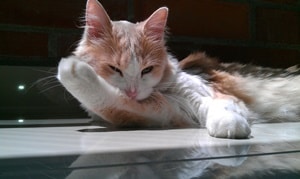
Addressing Boredom and Anxiety.
If you and your veterinarian see that there is no physical cause for the cat’s behavior, there are some things that you can do in improving the state of mind of the cat. Ensuring the cat feels loved, comfortable and safe at home is so important –it is as important as providing enough exercise and stimulation to it.
Utilizing some Medication.
Contingent to the extent of the skin condition the cat has due to scratching, chewing or licking, the vet might prescribe using antibiotics, antihistamines, and steroids. In addition, some compulsive cat behaviors due to psychological factors might be addressed with clomipramine or amitriptyline. These help in fighting anxiety, as well as functions as antihistamine.
Changing Foods.
Placing cats that are chewing or scratching on 6 weeks of exclusion diet is a great way in finding whether or not, food allergies are the cause of the problem. You might be advised to try various diets before some other nutritional supplements if the dry skin is to blame for the incessant licking or scratching. No other treats or foods must be offered in times of diet trial exclusion.
Eliminating parasites.
Due to the fact that it can be so hard to diagnose the flea infestation in cats, some vets recommend unswerving flea control products that you may purchase from vets for about 6-8 weeks in seeing if it lessens the occurrence of chewing, scratching, or licking. Likewise, treating parasites, including mites, if existent, may get rid of the cat’s discomfort, as well as the problems in behavior.

